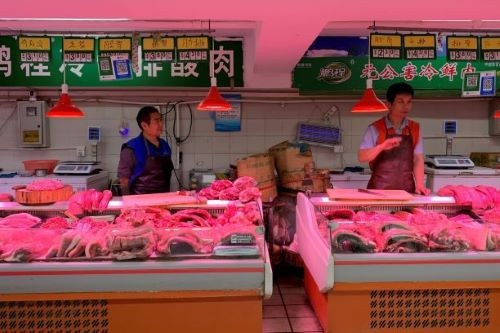China has streamlined its three-year plan designed in September, releasing a December 4 version that ups the recovery date given for various provinces to be independent of pork imports.
The country's Ministry of Agriculture and Rural Affairs has set a goal of 70% to 95% self-reliance on domestic pork produce, most especially for most of the southeast coastal provinces. The country expects Jiangsu, Zhejiang, Guangdong, Fujian, and cities of Tianjin, Beijing, and Shanghai to produce pork on their own by next year. Once this is achieved, the Ministry says northeast, northern, and central south regions - such as Hunan, Hubei, and Guangxi - will be next to attain independence from pork imports.
Specifically, the plan is to first stabilize the production of pork without having to experience a deficiency between demand and supply. Once stabilized, officials hope to have consistent stock of pork while selling and buying remains constant in the market. By 2020, the the cycle of production is seen to have achieved normal levels.
To achieve self-sufficiency, the plan outlines significant steps including strict implementation of the subsidies allocated for large-scale farms. Also, the Ministry wants land permits simplified for faster issuance.
The plan also highlights that pig breeders received staunch financial support as well as insurance. It assures that small and medium enterprise will not go unnoticed and neglected. They are to receive production support as well.
Most importantly, the plan intensifies the prevention and control of African Swine Fever that was the root cause of the country's problem with its pork production. The country has to cull to almost a complete wipeout its hog herd due to the ASF epidemic.
While the three-year plan is strong on goals of self-reliance regarding pork production, market observers think that China recognized it is losing significant revenue if it continues to import meat. The money spent on imports could be a significant boost to the local economy if that amount of money never goes out of the country.
For example, China voraciously consumed about 50% of pork products from suppliers all over the world. Still, 95% of the local demand was sourced from the country's breeders despite ASF.
To put those percentages in numbers, China bought about 8 million tons of pork from international suppliers in 2018. At the same time, the country produced 54 million tons of pork.
This means the country remains to be the highest consumer of meat because of its high population. Most importantly it means that China can be free from any costly pork importation. This point was aptly explained by Yu Kangzhen, a vice-minister for agriculture when officials initially presented the three-year plan in September.
Yu said even if China imported porks at its highest level within the most recent years, total imports only accounted for about 2% of the country's local meat produce. With that being said, Yu said that the country can achieve 95% self-sufficiency when it comes to meat production.
This was seconded by Pan Chenjum of Rabobank, saying that China's pork market is massive and imports remain to be on small-scale.






